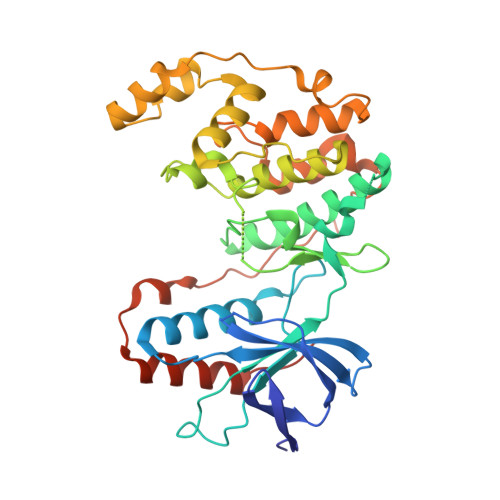Lipid Molecules Induce p38 alpha Activation via a Novel Molecular Switch.
Tzarum, N., Eisenberg-Domovich, Y., Gills, J.J., Dennis, P.A., Livnah, O.(2012) J Mol Biol 424: 339-353
- PubMed: 23079240
- DOI: https://doi.org/10.1016/j.jmb.2012.10.007
- Primary Citation of Related Structures:
4E5A, 4E5B, 4E6A, 4E6C, 4E8A - PubMed Abstract:
p38α mitogen-activated protein kinase (MAPK) is generally activated by dual phosphorylation but has also been shown to exhibit alternative activation modes. One of these modes included a direct interaction with phosphatidylinositol ether lipid analogues (PIA) inducing p38α autoactivation and apoptosis. Perifosine, an Akt inhibitor in phase II clinical trials, also showed p38α activation properties similarly to those of PIAs. The crystal structures of p38α in complex with PIA23, PIA24 and perifosine provide insights into this unique activation mode. The activating molecules bind a unique hydrophobic binding site in the kinase C'-lobe formed in part by the MAPK insert region. In addition, there are conformational changes in the short αEF/αF loop region that acts as an activation switch, inducing autophosphorylation. Structural and biochemical characterization of the αEF/αF loop identified Trp197 as a key residue in the lipid binding and in p38α catalytic activity. The lipid binding site also accommodates hydrophobic inhibitor molecules and, thus, can serve as a novel p38α-target for specific activation or inhibition, with novel therapeutic implications.
Organizational Affiliation:
Department of Biological Chemistry, The Alexander Silberman Institute of Life Sciences and The Wolfson Centre for Applied Structural Biology, The Hebrew University of Jerusalem, Jerusalem 91904, Israel.















